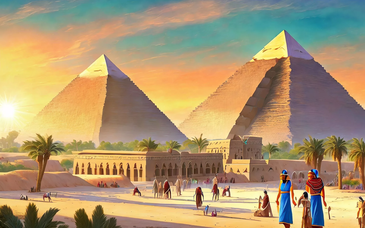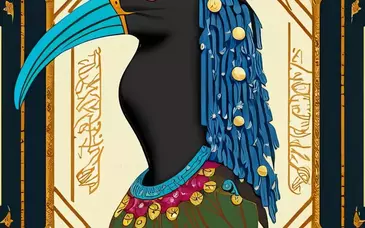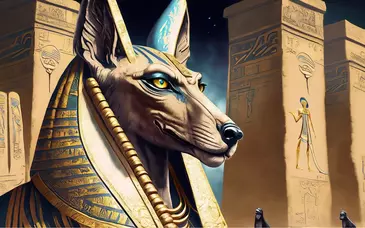In the annals of history, few civilizations shine as brightly as Egypt of the Pharaohs. A land graced by the mighty Nile, adorned with majestic pyramids, and ruled by iconic pharaohs, ancient Egypt has left an indelible mark on the tapestry of human civilization. Join us on a journey through time as we unravel the fascinating history of Egypt during the era of the Pharaohs.
1. The Birth of a Civilization: Nile's Gift to Egypt: Ancient Egypt owes its prosperity to the life-giving Nile River. Explore how the annual flooding of the Nile enriched the soil, fostering an agricultural abundance that laid the foundation for a flourishing civilization along its banks.
2. Rise of the Pharaohs: Egypt's Divine Rulers: Step into the sandals of the pharaohs, considered divine rulers and the living links between the mortal realm and the gods. Discover the stories of iconic pharaohs like Khufu, Hatshepsut, Ramses II, and Tutankhamun, whose legacies continue to captivate the imagination.
3. The Splendors of the Old Kingdom: Pyramids and Sphinx: Witness the architectural marvels of the Old Kingdom, characterized by the construction of the Great Pyramid of Giza, the Sphinx, and other pyramids that stand as eternal testaments to ancient engineering and celestial aspirations.
4. Golden Age of the New Kingdom: Prosperity and Power: Enter the Golden Age of the New Kingdom, where Egypt reached new heights of prosperity and power. Explore the grandeur of Luxor and Karnak, the diplomatic prowess of Queen Nefertiti, and the military might of pharaohs like Thutmose III.
5. Amarna Period: Akhenaten's Revolutionary Reign: Encounter the radical shift during the Amarna Period, initiated by Pharaoh Akhenaten. Explore the city of Amarna, dedicated to the worship of the Aten, and witness the cultural and religious transformations brought about by this revolutionary ruler.
6. Temples, Tombs, and the Valley of the Kings: Marvel at the grand temples dedicated to gods and pharaohs, and venture into the intricate tombs of the Valley of the Kings, where the afterlife beliefs of the Egyptians come to life through vivid hieroglyphs and burial treasures.
7. The Decline and Legacy: Foreign Rule and the Enduring Spirit: Trace the decline of ancient Egypt through foreign invasions, including the rule of Persians, Greeks, and Romans. Despite external influences, witness the enduring spirit of Egyptian culture, language, and religious practices that persisted through the ages.
The history of Egypt during the era of the Pharaohs is a captivating saga of monumental achievements, divine rulers, and cultural brilliance. From the fertile banks of the Nile to the timeless pyramids and temples, the legacy of ancient Egypt continues to echo through the corridors of time, inviting us to explore its mysteries and marvel at its enduring majesty.


